Kings Domain (Central Melbourne)

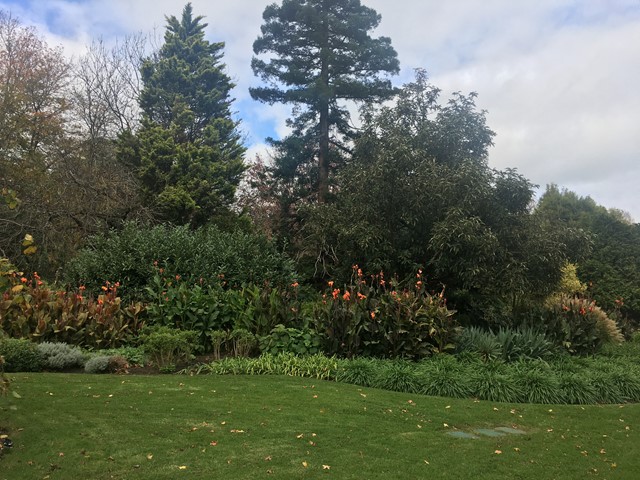
The Domain Parklands include Kings Domain, Government House Reserve, Shrine of Remembrance Reserve and the Royal Botanic Gardens, extending to the river.
Features include the Grotto, a former quarry, now transformed into a fern gully; the imposing Observatory Gate complex leading into the Royal Botanic Gardens; a statue of King George V, for whom Kings Domain is named; the Shrine of Remembrance, a moving memorial to Australia's war dead; the Sidney Myer Music Bowl; and the Pioneer Women's Memorial Garden, recognising the contribution made by Victoria's female pioneers.
As you walk around the parklands, also look out for the memorial to Weary Dunlop, who served heroically as a doctor in World War Two; the painted poles and reburial stone that mark the site of Aboriginal remains; Governor La Trobe's Cottage, a tiny prefabricated structure imported from England; and the popular Tan jogging circuit.
Sculptures and Monuments:
Pioneer Women's Memorial
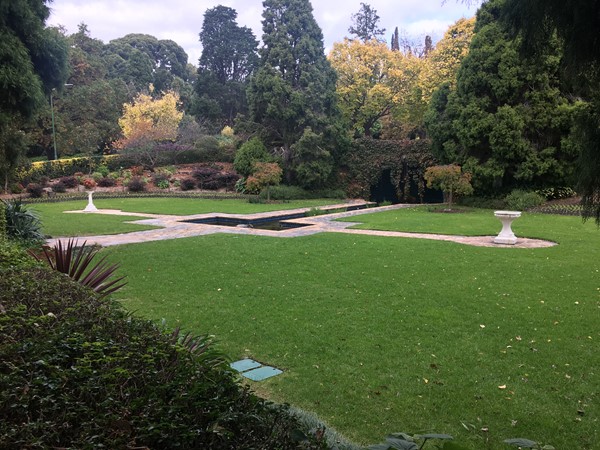
Designed by Hugh Linaker (1934)
The memorial garden is set in a circular depression with a formal, symmetrical garden which is traversed by a watercourse in the shape of a cross, which flows into a grotto carved into the cutting. Built into the grotto is a half-cupola lined with blue tiles, under which stands the small bronze statue of a woman by the sculptor Charles Web Gilbert.
In 1933, the Victorian government formed an all-male Centenary Celebrations Council in preparation for Melbourne's centenary the following year. The Women's Centenary Council was formed in an attempt to give the women of the state an influential role in the celebrations. At its first meeting, this council pledged to erect a suitable memorial to Victoria's pioneer women, and fundraising initiatives were established with the aim of developing a garden of remembrance in Kings Domain. The council's initiatives included the sale of a commemorative book and 'sheets of remembrance' onto which anyone, for one shilling, could inscribe their own name, or that of an ancestor. This was very successful and thousands of names were gathered and then buried beneath the sundial in the garden.
Location: Northern part of Kings Domain
Grotto Waterfall
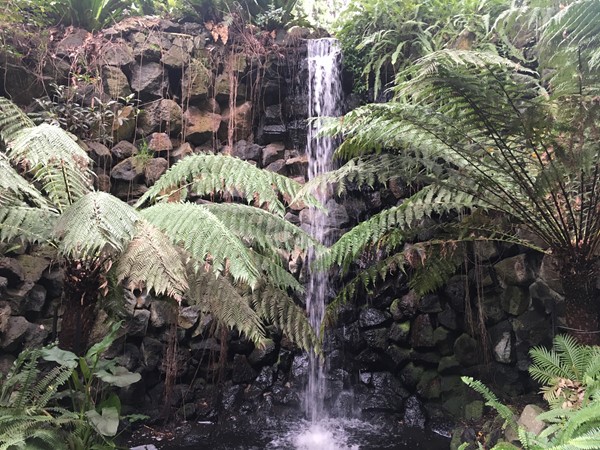
This feature, funded by public subscription, provides a tranquil setting within the Kings Domain, which encompasses stonewalls and pathways in a leafy glade and fernery. Water cascades through a series of features into a cement grotto, then flows into a series of circular pools.
Location: Kings Domain, near the Royal Botanical Gardens.
Tilly Aston Bell
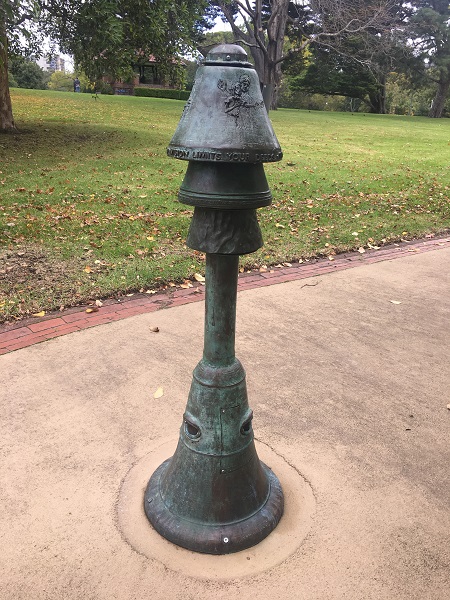
By Anton Hasell (1999)
This sculpture by commemorates the centenary of the Vision Australia Foundation and the life and achievements of its founder, Tilly Aston. Formerly known as the Association for the Blind, this organisation has provided services and advocacy for people with blindness and vision impairment since 1895.
The interactive sculpture consists of three connecting bells cast in bronze, and features images of Aston. Originally, when this work was approached, movement sensors triggered a series of tolls. The inscription on one bell is in Braille.
Tilly Aston was the first blind person in Australia to attend university, but her education was cut short by an absence of textbooks in Braille. In 1894, she established a Braille library and a year later founded the Association for the Blind, the aim of which was to improve the quality of life for the blind through self-help rather than through charity. She was responsible for gaining the blind free post for Braille and talking books, free travel on public transport and the right to vote.
Location: Northern part of Kings Domain
Australian Turkish Friendship Memorial (Seeds of Friendship)
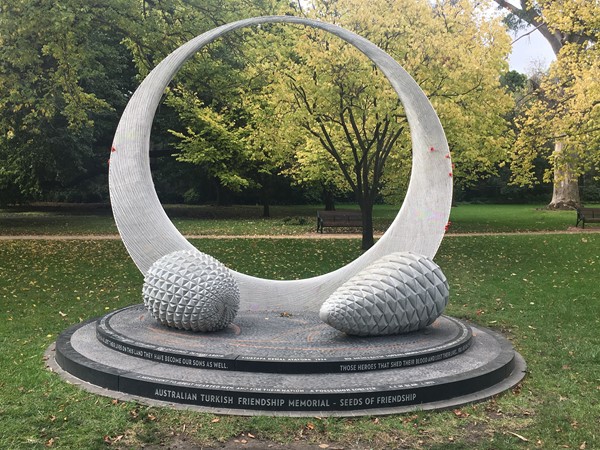
By Matthew Harding (2014)
To commemorate the 100 year anniversary of ANZAC day, this memorial comprises of a large stainless steel 'wreath' form, two granite seed pods; a casuarina to represent Australia and a pinecone to represent Turkey, bluestone pebble mosaic with copper etched 'pine needles' engraved with quotes from soldiers and family members.
Location: Along Birdwood Avenue (opposite Shrine of Remembrance).
Maltese War Memorial
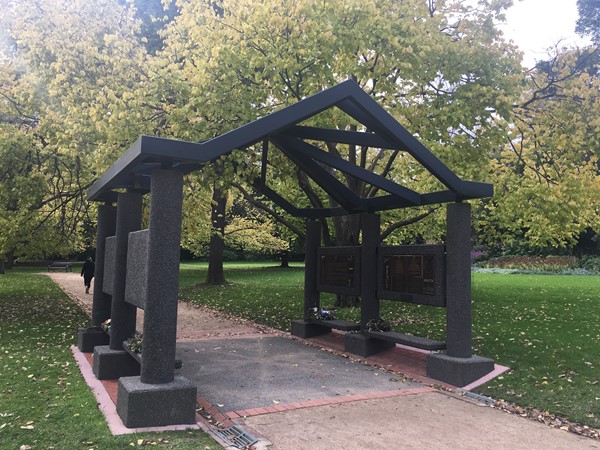
By Max Chester (1994)
An open timber structure above and panels either side pay tribute to the people of Malta, and to those who served in her defence during World War II. Also known as the Shelter of Peace.
Location: Along Birdwood Avenue (opposite Shrine of Remembrance).
Edward George Honey Memorial
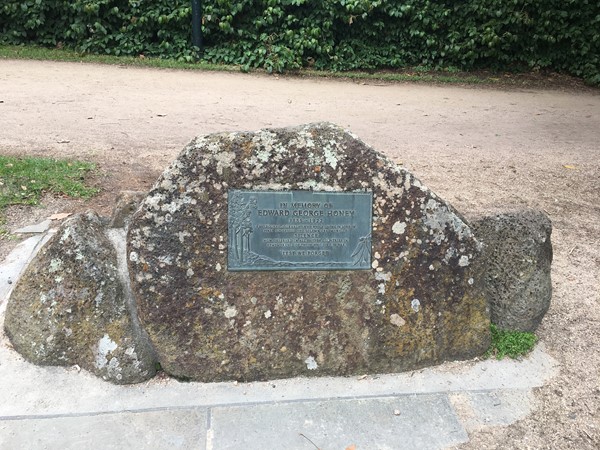
It is fittingly that the memorial is located opposite the Shrine of Remembrance since it is to Edward George Honey that we owe the ritual of observing two minutes' silence in commemoration of the war fallen.
Location: Birdwood Avenue, Kings Domain (east side, opposite the Shrine of Remembrance)
Nurse Edith Cavell Memorial
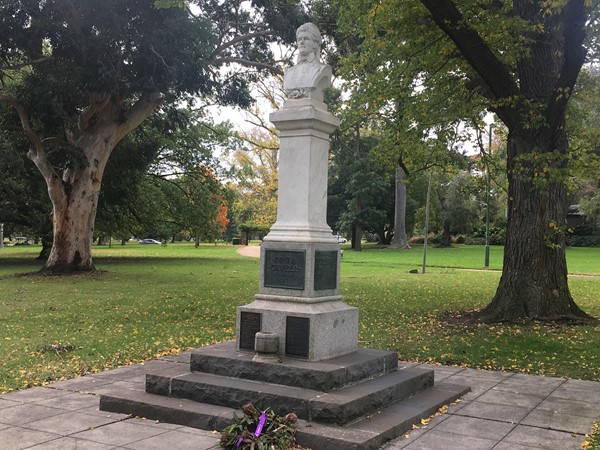
By Margaret Baskerville (1926)
The memorial is a marble bust of Nurse Edith Cavell on a granite pedestal.
Edith Cavell trained as nurse in the late 1890s. In 1907, she was posted in Brussels to assist in establishing a modern nursing system at the Berkendael Medical Institute. At the outbreak of World War One she was left in charge of the hospital and what is now known as the Red Cross. During that time she assisted more than 200 Belgian, British and French soldiers who had been separated from their armies, or who had escaped German detention. In 1915, she was accused of conspiring to help prisoners escape, and was tried by a military court in Brussels. She was convicted and sentenced to death, along with four others. Cavell was executed by firing squad on 12 October 1915; she was still wearing her nurse's uniform. Her last words feature on one of the memorial's plaques: 'I know now that patriotism is not enough. I must have no hatred and no bitterness towards anyone.' Cavell's body was returned to England in 1919, where a full military service was conducted at Westminster Abbey.
Location: Along Birdwood Avenue (opposite Shrine of Remembrance).
Australian Hellenic Memorial
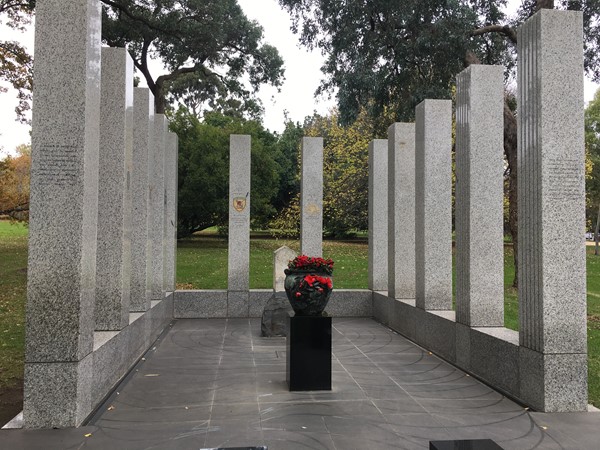
By Evangelos Sakaris (2001)
Situated north-east of the Shrine of Remembrance, the memorial comprises 12 three-metre-high granite columns which houses a cast-bronze urn. In classical Greek tradition, the design is open, ordered and symmetrical, its form conveying a sense of contemplative calm.
The memorial honours the Australian and Hellenic men and women who served in Greece and in the battle of Crete during World War II, and those who lost their lives in these campaigns. As well as honouring the servicemen and women, the monument has been designed to embody the ideals of democracy, liberty and peace - ideals articulated and embraced by the United Nations at its establishment following World War II.
Location: Birdwood Avenue (near Government House Drive), Kings Domain.
Sir John Monash
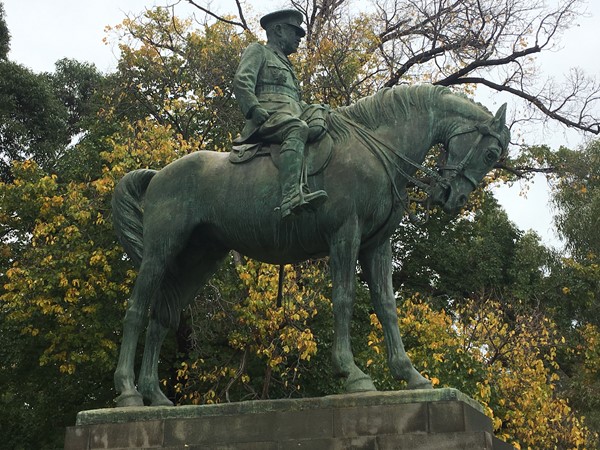
By William Leslie Bowles (1950)
A bronze statue of Sir John Monash in an equestrian pose, on a granite plinth. The monument to Monash was funded by Melbourne City Council and public subscription. It was proposed in 1932, the year after his death but due to the outbreak of World War Two was not completed until 1950.
John Monash was born in Melbourne in 1865. He obtained degrees in arts, law and engineering from the University of Melbourne, and worked on construction projects before the outbreak of World War One. Monash commanded the 4th Infantry Brigade at Gallipoli and then the 3rd Division in Armentieres, France. In recognition of his military prowess and leadership skills, he was promoted to lieutenant general in 1918, commanding the Australian Army Corps. Following the war, Monash became general manager of the State Electricity Commission, and was instrumental in developing the brown-coal deposits of the Yallourn fields, Gippsland. He also served as the vice-chancellor of the University of Melbourne.
Location: Cnr Government House Drive and Birdwood Avenue, Kings Domain.
Sir Thomas Blamey Memorial
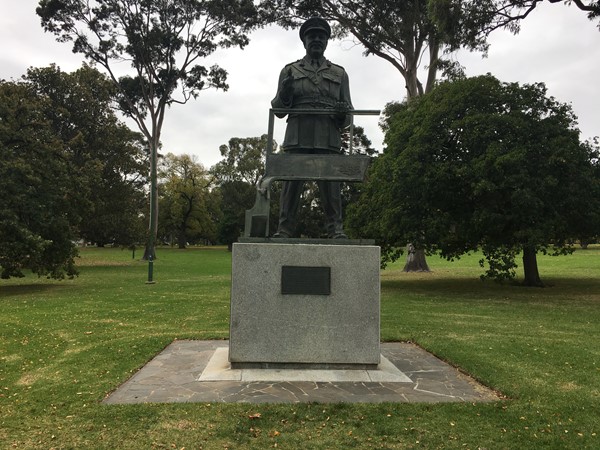
By Raymond B Ewers (1958)
A bronze statue of Field Marshal Sir Thomas Blamey in uniform standing behind an army vehicle windscreen installed on top of pedestal. There was some dispute over just what vehicle Blamey would be mounted on, with both tradition and Blamey's wife demanding a horse. Raymond Ewers won this battle and mounted his subject on a military Jeep. Sited opposite Monash, depicted on horseback and with whom Blamey had served in World War One, Ewers' statue captures the transformation of the technologies of war through this symbol of its mechanisation.
Sir Thomas Blamey was born near Wagga in 1884 and was the first Australian to become field marshal. He was a controversial man, who commanded much respect for his actions on the battlefield and for his willingness to challenge British and US generals, but his skills did not translate well to the civilian arena. As police commissioner of Victoria between 1925 and 1936, he was harsh in his treatment of Labor activists and the unemployed, and he resigned amid scandal when he was linked to wounding the superintendent of the Criminal Investigation Bureau. Still, Blamey was knighted in 1935 and promoted to field marshal in 1950, the year before he died.
Location: Cnr Government House Drive and Birdwood Avenue, Kings Domain.
Edmund FitzGibbon Memorial
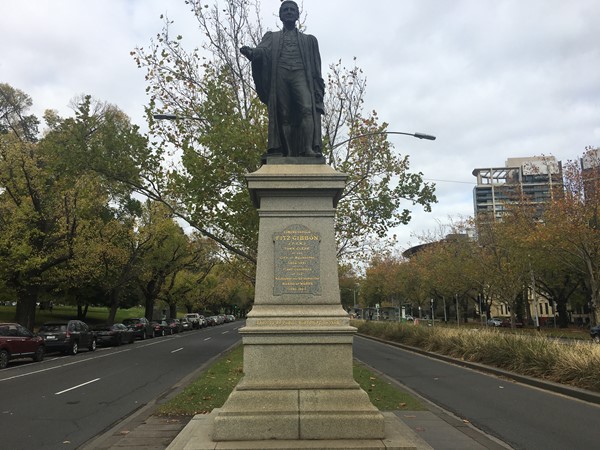
By James White (1908)
The monument is a bronze statue of Edmund FitzGibbon depicted in a barrister's gown and wig which is a reference to his admission to the bar in 1860, which followed several years of study while maintaining his duties as town clerk.
Edmund FitzGibbon was born in Ireland and worked as a clerk in London before immigrating to Australia in 1852. Four years later, he became Melbourne's town clerk. FitzGibbon secured several parks and gardens for the city and was instrumental in introducing tram tracks. In 1891, he became the first chair of the Melbourne Metropolitan Board of Works.
Location: Cnr St Kilda Road and Linlithgow Avenue.
Government House Gates
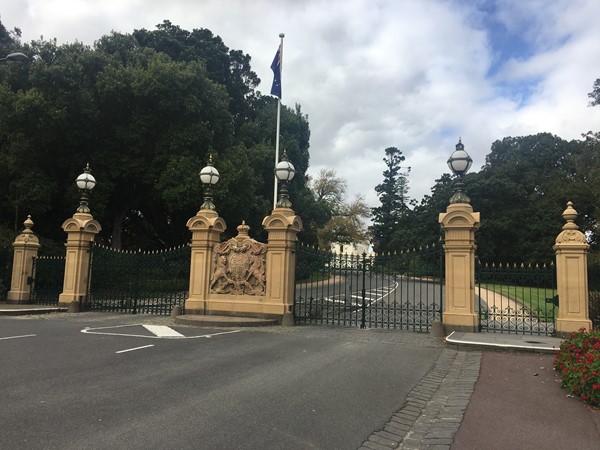
Location: Government House Drive.
Hand of God
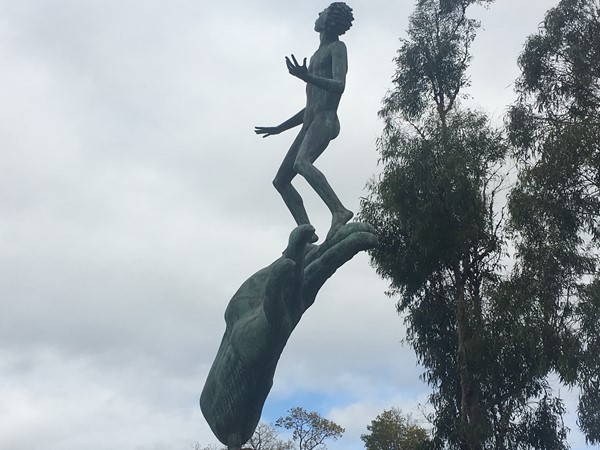
by Carl Milles (1954)
The original sculpture of "Hand of God" is located in Sweden and it can also be found in other locations such as the USA, Japan and Indonesia.
Location: Sidney Myer Music Bowl (south west side), Linlithgow Avenue.
Sidney Myer Memorial
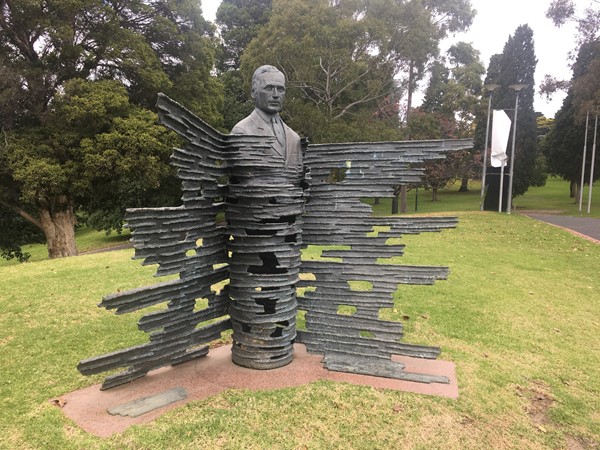
by Michael Meszaros (2000)
The sculpture commemorates Sidney Myer (1878-1934), a Russian-born Jewish-Australian businessman and philanthropist, best known for creating Myer, a large chain of department stores. The sculpture was unveiled in 2001 to mark the completion of the reconstruction of the Sidney Myer Music Bowl.
Location: Sidney Myer Music Bowl (south east side), Linlithgow Avenue.
King George V Memorial
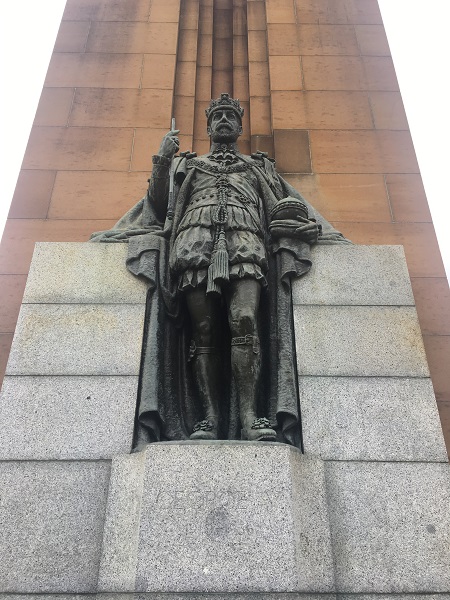
by William Leslie Bowles (1952)
The memorial to George V is highly symbolic in design, signalling the power of the monarchy and the British Empire's paternalism towards its colonies. The Empire underwent several changes during his rule: an independent Irish parliament was established in 1918, the country then divided along religious lines two years later, and demands for self-governance in the colonies resulted in the creation of the British Commonwealth of Nations in 1931.
Fluted columns are flanked by two large bronze statues with two small heraldic sandstone statues standing north and south. On the eastern face stands a statue of King George V in full Garter Robes, wearing the Imperial Crown and holding the ceremonial sceptre and orb. On the western face stands a statue representing Maternal Britannia holding a cross and olive branch in her hands, symbolic of love and peace, with two children representing the Dominions and Colonies living in peace under British rule are at her feet. Heraldic statures of a lion and a unicorn flank the northern and southern extremities of the base. Each animal holds a shield showing the armorial bearings of King George V.
Location: West of the Sidney Myer Music Bowl, Linlithgow Avenue.
Sir Edward 'Weary' Dunlop
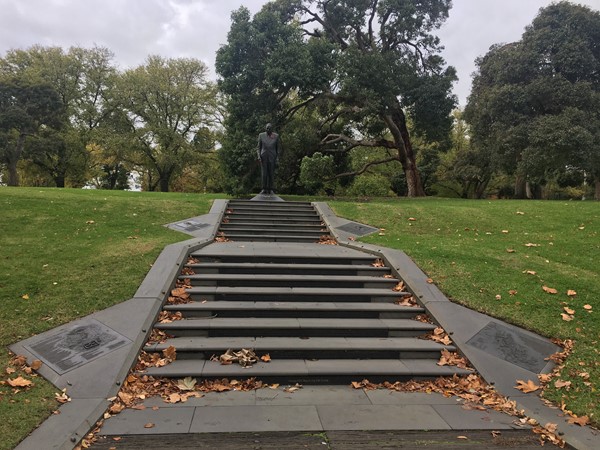
by Peter Corlett (1995)
Large, bronze statue of 'Weary' Dunlop is fixed to a granite pedestal. The statue stands above stairs constructed from ironbark railway sleepers and stone. Metal spikes from the Burma Thailand railway are used in the sculpture. On the steps leading to the sculpture are the names of other doctors and medical staff who also cared for POWs.
Weary Dunlop trained in Melbourne as a pharmacist before he turned to medicine. He then undertook surgical training in London, where he remained until the outbreak of World War Two. Dunlop joined the Medical Corps of the Australian Army. A surgeon of considerable skill, he served in a senior position in the Middle East and was then transferred to Java. In 1942, his company was captured by Japanese troops and imprisoned first in Singapore and then in Changi, Thailand. His company was sent to work on the Thai segment of the infamous Burma-Thailand railway. A natural organiser and leader, Dunlop led the first Australian prisoners of war who were to work on the line. He was a courageous leader and compassionate doctor, and restored morale in those terrible prison camps and jungle hospitals. He defied his captors, gave hope to the sick and eased the anguish of the dying.
After 1945 and with the war behind him, Dunlop turned his energies to healing and to building bridges; he worked towards the health and welfare of former prisoners of war and their families, and towards promoting better relations between Australia and Asia.
Location: Along St Kilda Road.
South African War Memorial (Memorial to Fallen Soldiers)
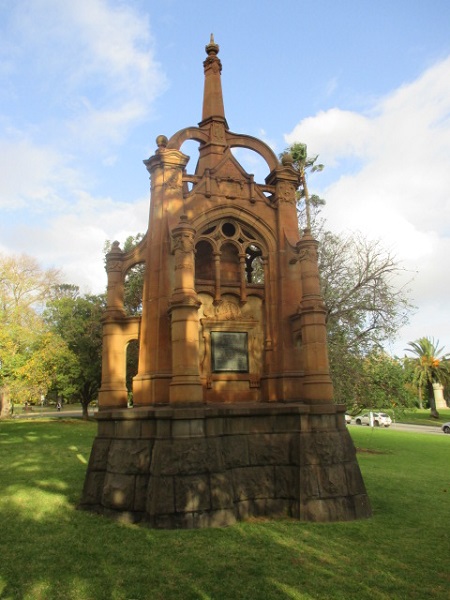
by Joseph Hamilton (1904)
The monument resembles a buttressed church spire, with four bronze plaques commemorating the fallen soldiers of the 5th Victorian Contingent.
The Boer War, or South African War, was fought from 1899 to 1902, the British pitted against the Boers (now called Afrikaners). Many opposed Britain's policy, and in Australia many questioned why the nation should be involved. Nevertheless, loyalty to Empire ruled and 16,000 troops were sent, almost a quarter from Victoria. The 5th Victorian Contingent was the largest of eight sent by the state. Some 228 Victorians were killed during the war, which ended with the signing of the Treaty of Vereeniging in May 1902.
Following the return of soldiers, the remaining members of the 5th Victorian Contingent erected this monument to honour their fallen comrades.
Location: Along St Kilda Road.
Victoria Police Memorial
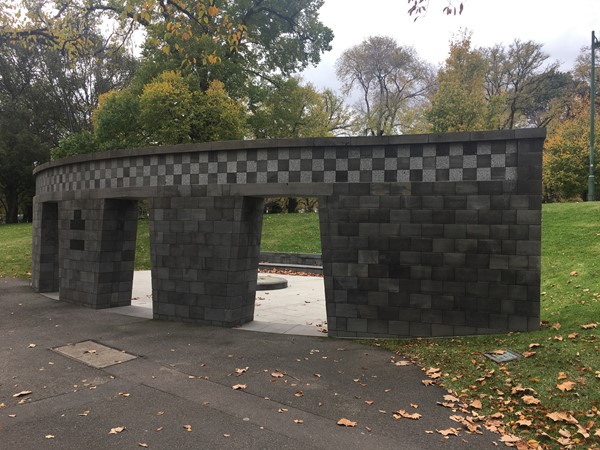
by Anton Hasell and Marcus Ward (2002)
The memorial is in honour of police officers killed on duty and is a direct response to the deaths of Sergeant Gary Silk and Senior Constable Rodney Miller in 1998.
The memorial is a grassed amphitheatre set into the edge of Kings Domain with a curvilinear bluestone wall featuring four arched entry portals facing St Kilda Road. An elliptical stage features a raised replica of the Victoria Police emblem constructed from various coloured stone. Bordering the top edge of the wall is a checked pattern of Riverina granite and bluestone tiles. The names of Police officers who died on duty are cast in bronze plaques set into the wall.
The inscription reads "This memorial recognises the ultimate sacrifice paid by members of the Victoria Police Force in maintaining law & order in Victoria. The memorial stands as a symbol of the community's deepest respect and as a tribute to those members of the Victoria Police Force who have given their lives in the line of duty so that the Victorian community is a safer place for all."
Location: Along St Kilda Road.
Photos:
Location
Birdwood Avenue, Melbourne 3004 View Map








